Driver’s view: Tom Dinsdale’s compact Schuitemaker Rapide 580
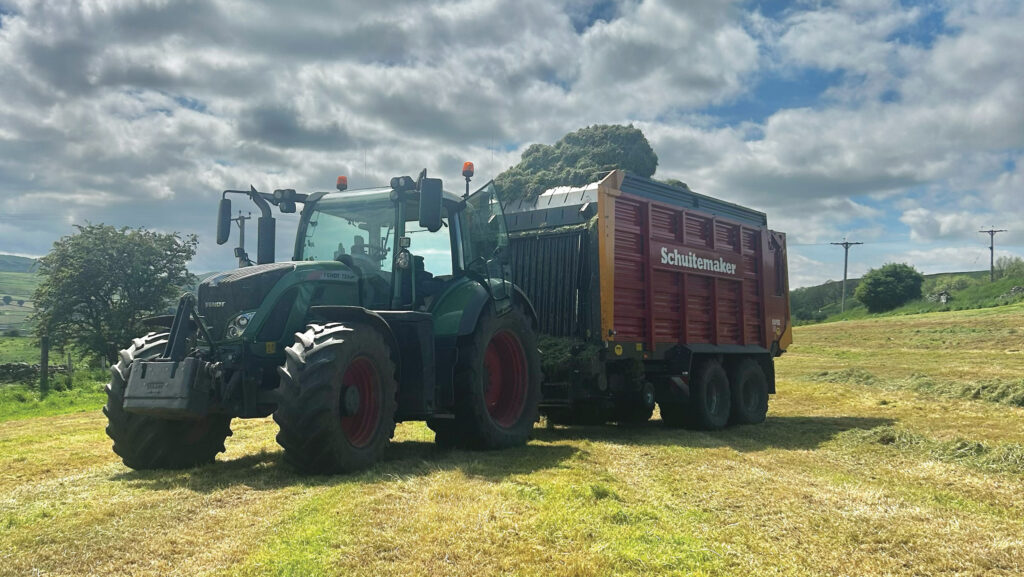 Schuitemaker Rapide 580 © MAG/Oliver Mark
Schuitemaker Rapide 580 © MAG/Oliver Mark Schuitemaker has been bolting forage wagons together at its Dutch factory since the mid-1980s and now has an extensive line-up to cater for farms big and small.
We’re focusing on the Rapide 100-series in this article, which sits between the smaller 10s and big 1000s.
See also: Contractor retrofits nutrient analysis to Claas Jag 830
Features shared across the eight models it encompasses, which run from the 34cu m 520 to the 54cu m 780, include Schuitemaker’s unique 2m-wide, pull-type pick-up and the Rapid Stream moving headboard.
Schuitemaker Rapide 580
- Year 2024
- Capacity 38cu m
- Pickup width 2m
- Knives 42
- Chop length 44mm
- Weight 8.25t
- Tyres 750/45 R22.5 Alliance
- Price paid £100,000
These proved attractive selling points for Yorkshire farmer Tom Dinsdale, who last year upgraded from a 10-year-old Rapide 55 to a new Rapide 580 to harvest his family’s 80ha of intensive lowland silage ground.
Alongside this, they have another 160ha of upland grazing land, with the grass used to feed 200 milkers, another 200 dry cows and replacement heifers, and 200 predominantly Hereford-cross dairy beef.
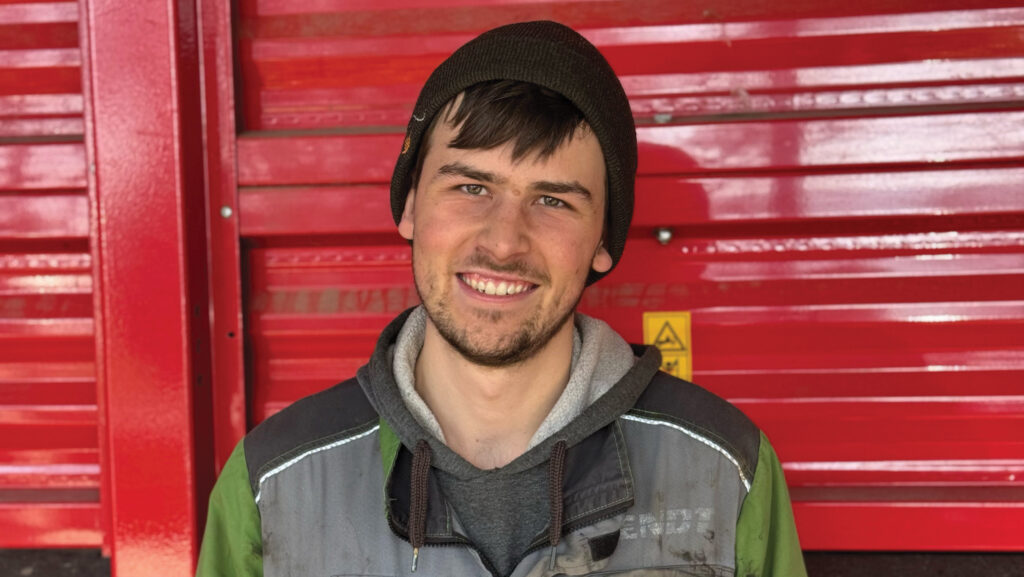
Tom Dinsdale © MAG/Oliver Mark
Why a forage wagon?
Until 2014 we’d been using a contractor, but our small upland farm was never first on their list come harvest and they always wanted to chop all the grass in one go.
That meant we were forced to sacrifice quality and yield, as inevitably a good chunk of the crop was either past its best or not ripe.
By getting our own means of collection, we can harvest every other week – whenever the crop is ready – to make the best silage, which is our priority.
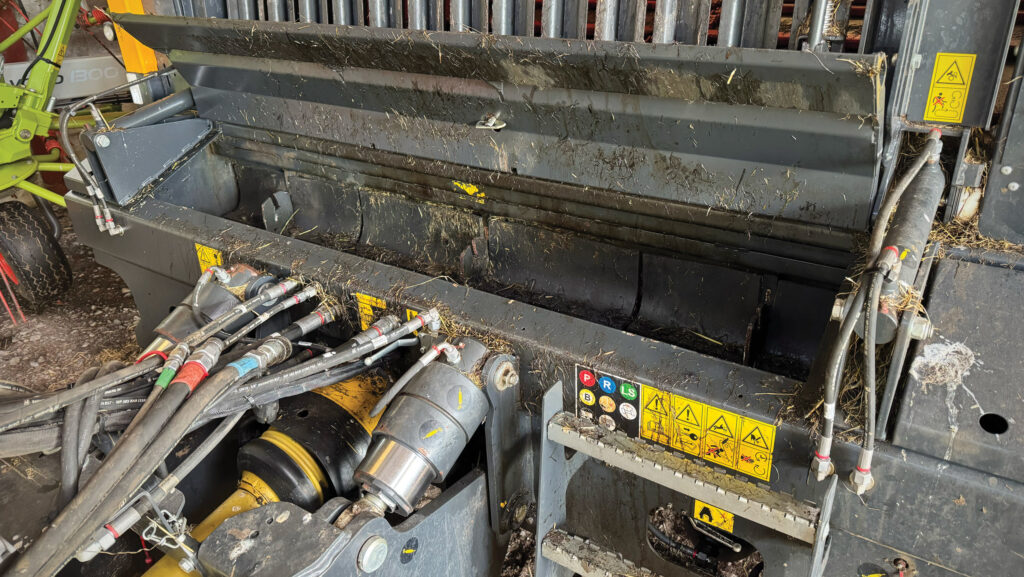
Neat packaging of the chopping system improves weight distribution © MAG/Oliver Mark
Plus, it gives us the flexibility to work around milking without the stress of trying to keep a chopper going at the same time, and it’s far cheaper.
Diesel consumption is about 8 litres/load in first-cut grass, excluding the haul.
Output-wise, it’s a match for a smallish forager in the field and, as we’re rarely hauling more than a mile from the farm, it’s not that inefficient.
The only downside is that you’re carrying the weight of the chopper back to the yard every time.
And why a Schuitemaker Rapide?
We knew the brand, as we used to run their diet feeders, but it was a Dutch student we had working here that really sold us the forage wagons.
He’d run a fleet of them at home and told us they were simple, compact and well-built – and so it has proved.
We bought our first – a Rapide 55 – in 2014 and replaced it last year for the 580.
This model is about as big as we could go and, with a full load weighing 20t, it certainly tests the Fendt 724.
Before buying we did look at a couple of other options; we weren’t keen on Pottinger’s belt drive and push-type pick-up, and the Strautmann seemed too complicated.
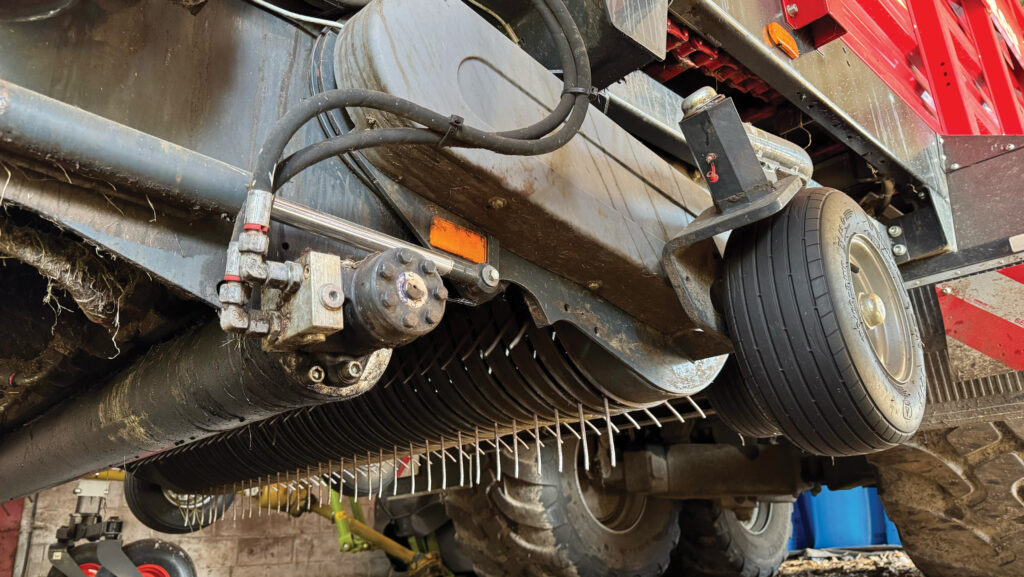
The pressure can be adjusted to suit conditions © MAG/Oliver Mark
Any extras?
Only a degrade – we opted against the forced rear axle steering system in favour of a hydraulic free-steer setup. The main reason is that it required a second steering ball arm.
They’re fairly expensive, our gateways are wide enough to get through without it, and we’d need two of them, as we sometimes run the wagon as a zero grazer on a Fendt 516.
Extras aside, there are plenty of improvements over the old model, anyway. It has more capacity, a bigger chopping unit and a moving headboard.
Schuitemaker has also added a second rear floor chain motor, which should reduce the stress in the driveline.
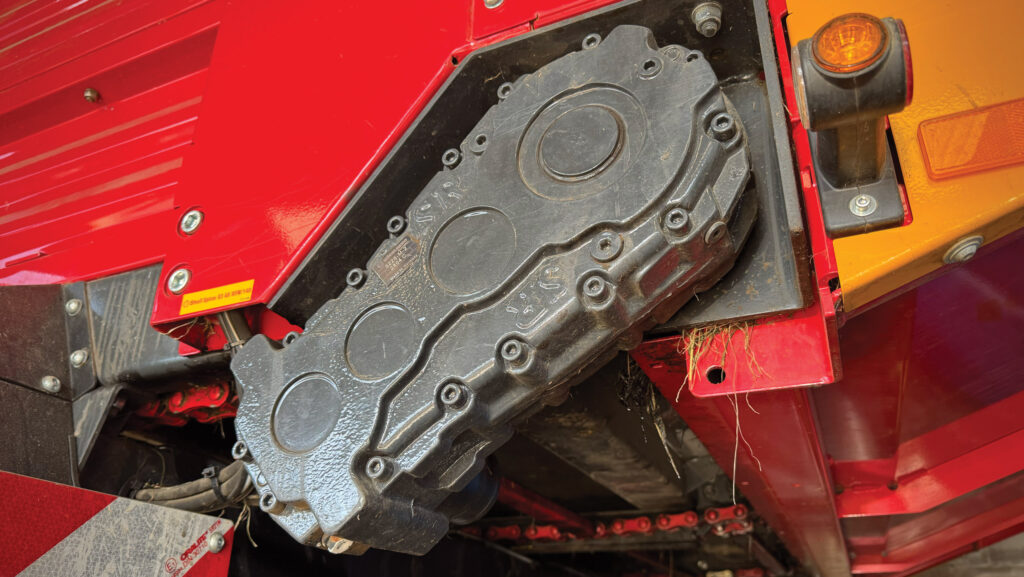
© MAG/Oliver Mark
How much work does it do?
We cut our 80ha of silage ground three or four times a year, so it does about 280ha annually.
If we’ve had a wet spring then we might also put a mower on the front of the tractor and do some zero grazing at the tail end of the year.
Typical daily output is about 20ha, though that all depends on the length of the haul.
And work speed varies wildly – it could be 7-8kph in first cut but 15-20kph in a dry third.
We tend to rake up 25ft of grass into a row, rather than trying to chew through massive swaths.
Plus, bigger rakes are prone to gathering in more ash; we’d rather take it steady and make better silage.
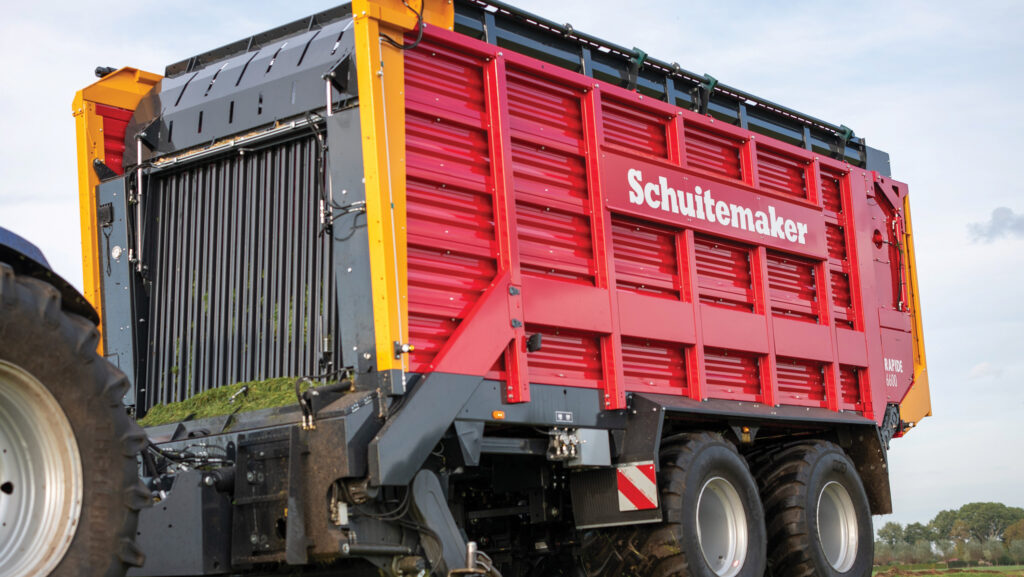
© MAG/Oliver Mark
How has it performed?
The stand-out feature is the pull-type pick-up, which none of the other manufacturers seem to offer.
It rides over undulating ground really well and is more forgiving than a push-type setup on our shallow land, which has rock just a few inches below.
Even on the worst fields, we can just back off the pressure and get the crop flying through.
We also like the design of the chopping system, with the rotor tucked right underneath the front of the wagon.
This keeps it compact and the weight as close to the tractor as possible.
Plus, there’s plenty of steering angle, so it scuffs less than our neighbour’s Strautmann.
The most challenging thing is the weight. Though 200hp would probably be enough, we appreciate the 724’s extra power when dragging the load home.
What’s grass quality like?
The switch from using contractors to harvesting the grass in-house has upped the silage metabolisable energy (ME) from 10MJ to 11MJ.
This has increased yields by 2 litres of milk a cow a day, which alone pays for the cost of the wagon.
We’re big fans of the long 44mm chop, which has raised butterfats and proteins and means we no longer need to incorporate straw into the ration.

Chopping at 44mm has increased butterfats and proteins © MAG/Oliver Mark
Sometimes I wonder whether the obsession with short-chop grass is partly driven by manufacturers wanting to sell high-horsepower self-propelleds.
They butcher the grass so finely that some of the best leafy stuff is lost over the sides of the trailer, especially when it’s very dry. We’d rather chop it longer and get it all in the clamp.
We do get the odd bit of soil and stone in the silage, but that would be true of a chopper, too.
The difference is that rather than turning the contaminants to dust and mixing them in with the forage, lumps are left whole and the cows can just nose them away in the trough.
Getting good consolidation in the clamp is more challenging though, as it’s a semi-compressed tangle of grass that takes a bit more skill to spread out than a finely chopped crop.
We tend to try to layer it in, as opposed to leaving a steep face.
These layers of different varieties and cut dates means we can be selective about what we feed each group of cows.
What could be improved?
In reality, very little, as changing one thing would adversely affect something else.
For instance, the rotor is a bit on the small side; it loves dry grass but struggles to chew through a wet, lumpy crop without the clutch slipping.
Yet the compact design is one of the attractions that we wouldn’t want to forego, so we just have to make sure the grass is just right. We’ve bought a big tedder for that reason.
Schuitemaker doesn’t offer an auto sharpening system, which might have been nice.
But, on the flipside, we’d probably wear the knives out quicker and, at £40 a pop, that would quickly get expensive.
As it is, we’ve got two sets of reversible knives, which I can sharpen with an angle grinder in an evening.
The one thing we wish we’d specced is weigh cells to monitor yields more accurately and compare them against slurry and fertiliser applications.
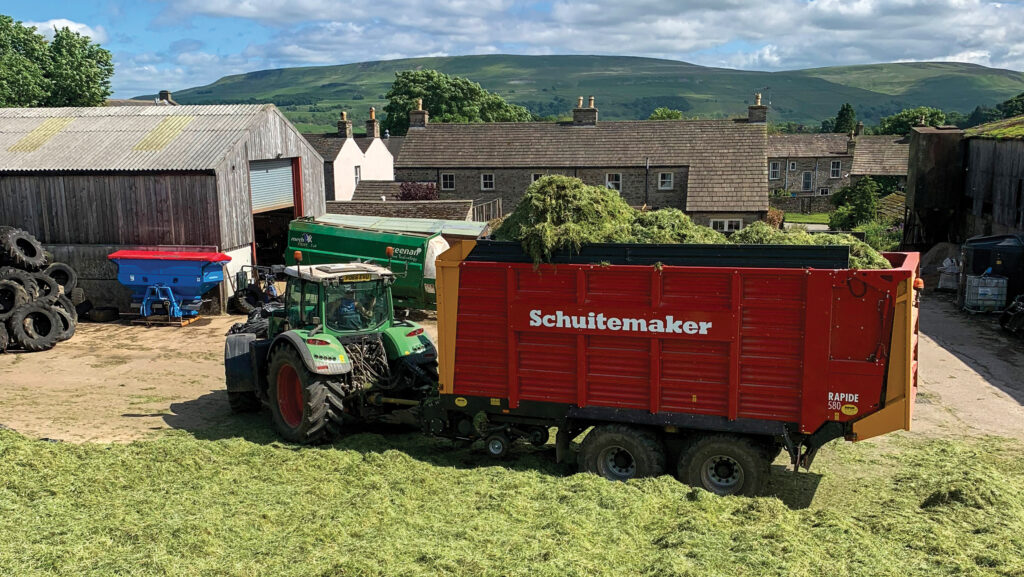
© MAG/Oliver Mark
Would you buy another?
Definitely, though the last one stayed for 10 years and we hope this one will manage the same.
It is incredibly farmer-friendly – it’s simple to operate, will take plenty of stick, and is easy to fix.
We’re not mechanically minded but we’ve managed to sort any problems ourselves.
Likes and gripes
Likes
- Pull-type pick-up
- Good knife access
- Compact proportions
- Easy to fix
Gripes
- Small rotor struggles with lumps
- No auto knife sharpening option
- Seems heavy

